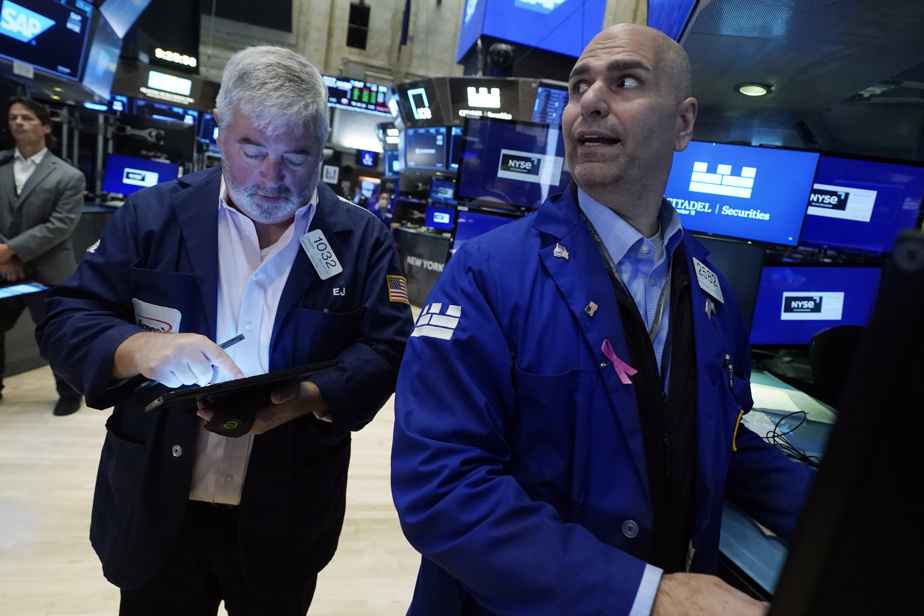(New York) The New York Stock Exchange ended in disorganized order on Friday, in an atmosphere of restraint at the end of a turbulent month, on the eve of a weekend which could lead to a partial paralysis of the American federal state .
The Dow lost 0.47%, the NASDAQ index rose 0.14% and the broader S&P 500 index fell 0.27%.
The New York market opened in the green, encouraged by a further easing of bond rates, as well as by the figures from the PCE report on consumer prices in August, a reference indicator for the American central bank (Fed).
If the crude index accelerated slightly, to 3.5% over one year against 3.4% in July, inflation excluding energy and food stood at 3.9% over one year, against 4.3 % in July.
This is the first time since September 2021 that the basic index (excluding energy and food) is below 4%.
“This supports our forecast that the Fed (American central bank) will leave its rates unchanged until the end of the year, even though a majority of its members anticipate a further increase,” commented Michael Peace, d ‘Oxford Economics.
But after a positive start, the indices stalled.
“There weren’t a lot of people ready to buy heading into the weekend,” observed Steve Sosnick of Interactive Brokers, for whom the end of September will have been very hectic. and unfavorable to stocks, also played a role.
The weekend could see the budget impasse in Congress lead to a “shutdown”, which would lead to a partial paralysis of federal government services, due to lack of funding.
A new text submitted by the Republican President of the House of Representatives, Kevin McCarthy, was rejected on Friday, making it more likely than ever that a number of civil servants will be laid off from work on Monday.
The prospect of this “shutdown” “wasn’t a major factor for stocks, but it didn’t help,” according to Steve Sosnick.
After falling, bond rates have tightened again. The yield on 10-year US government bonds stood at 4.57%, the same level as the day before at closing, after falling to 4.50%.
Wall Street also noted the extension of the strike among the three major historic American automobile manufacturers, Ford (-1.11%), General Motors (-0.57%) and Stellantis (-0.73%). Some 25,600 employees have now stopped working, two weeks after the start of the social conflict.
On the market, the Dow Jones was weighed down by JPMorgan Chase (-1.74%), as well as by stocks in the health sector, notably the insurer UnitedHealth (-1.16%) or the Merck laboratory (- 1.29%).
The cruise line Carnival took on water (-4.99%), despite a turnover above expectations and a first quarterly net profit since the coronavirus pandemic. Operators mainly retained the Miami group’s forecasts, considered disappointing.
Nike sprinted (+6.68%) after reporting a quarterly net profit significantly higher than expectations, even if its turnover came out slightly below expectations. Chief executive John Donahoe said he was confident of demand for the end of the year, particularly in China.
Toronto down
The Toronto Stock Exchange closed down almost 50 points on Friday, while the major American indices ended the session in disarray, at the end of a difficult September for investors.
The Toronto trading floor’s S&P/TSX composite index fell 49.47 points, or 0.25%, to 19,541.27 points.
On the currency market, the Canadian dollar traded at an average rate of 73.96 US cents, down from 74.11 US cents on Thursday.
On the New York Mercantile Exchange, the price of crude oil fell 92 US cents to US$90.79 per barrel, while that of natural gas lost 2 US cents to US$2.93 per million BTU .
The price of gold erased US$12.50 to US$1,866.10 per ounce and that of copper appreciated by 3 US cents to US$3.74 per pound.
The Canadian Press
